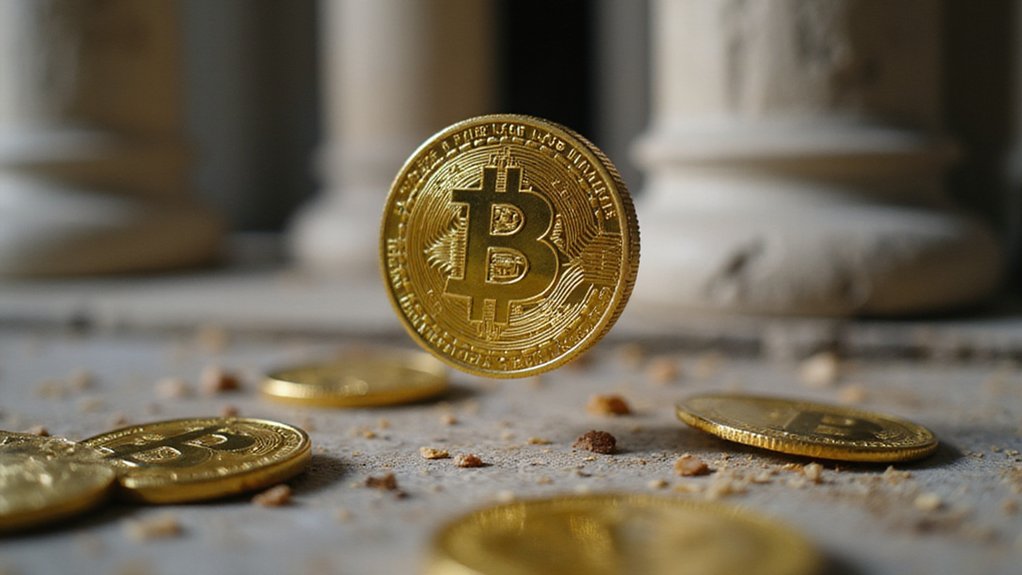While traditional banking systems lumber through multi-day settlement processes and extract hefty fees from cross-border transactions, stablecoins have quietly assembled a $228 billion empire that processes over $20 billion in daily volume with the efficiency of a Swiss timepiece.
The mathematics of this disruption prove particularly striking when considering USDC’s meteoric 39% surge since January 2025, catapulting to a record $61 billion market capitalization—a figure that would make most Fortune 500 companies envious. USDT, meanwhile, commands an even more impressive $155 billion fortress, having added $18 billion in 2025 alone while maintaining its position as the undisputed heavyweight of digital stability.
What renders this phenomenon genuinely revolutionary isn’t merely the astronomical figures (though watching USDC process nearly $585 billion in March 2025 transactions does provide a certain satisfaction), but rather the fundamental restructuring of monetary infrastructure occurring beneath Wall Street’s collective nose.
The stablecoin ecosystem now supports 121.67 million addresses, with 19.7 million actively transacting—numbers that suggest adoption patterns typically reserved for established financial institutions. This digital payment revolution reached unprecedented scale in 2024, with stablecoins achieving $27.6 trillion in transfer volume that exceeded the combined transaction volumes of Visa and Mastercard.
The emergence of yield-bearing stablecoins adds another layer of complexity to this financial renaissance, with $6.9 billion staked by mid-2025 in protocols that would have been considered science fiction merely a decade ago. These instruments effectively transform dormant digital dollars into productive assets, challenging the traditional banking monopoly on interest-bearing deposits.
Perhaps most tellingly, stablecoins now command 7.89% of the entire cryptocurrency market capitalization—a proportion that positions them as legitimate infrastructure rather than speculative novelty. The Trump administration’s regulatory clarity has only accelerated this momentum, providing institutional investors with the compliance framework they desperately craved. The growing intersection of artificial intelligence and crypto is further enhancing the efficiency and innovation within stablecoin systems.
The irony proves delicious: while central banks debate digital currencies and legacy financial institutions scramble to implement blockchain solutions, stablecoins have already constructed a parallel monetary system that processes more daily volume than many national payment networks. According to comprehensive market analysis, these digital assets now capture a significant 7.89% share of the total cryptocurrency market as of May 2025.
USDT and USDC’s dominance (controlling 97.1% of the top stablecoin holders) demonstrates that in finance, as in technology, first-mover advantage combined with execution excellence creates nearly insurmountable competitive moats.
Traditional finance, it seems, is being revolutionized by its own digital reflection.








